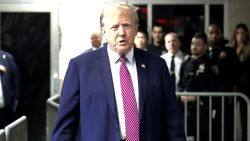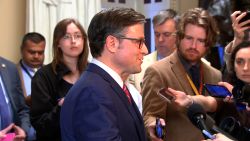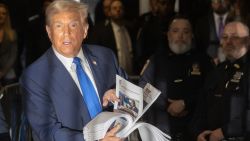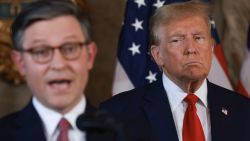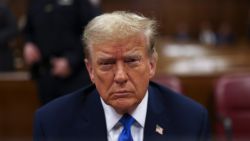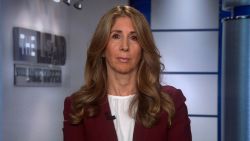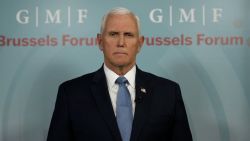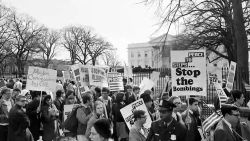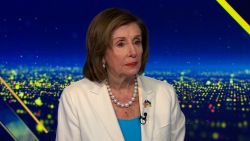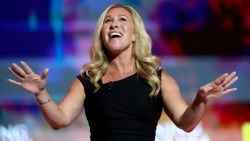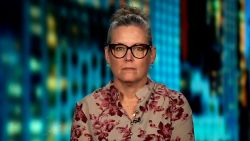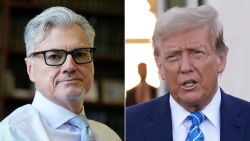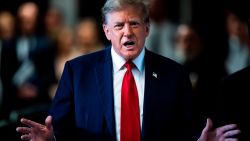America is stirring, but it’s every state for itself.
May 1 brings an easing of stay-at-home orders as around half the states in the union move toward a resumption of everyday life, or what will pass for it in the immediate future, in the next few days.
A bewildering patchwork of openings and new distancing rules for restaurants, business offices, churches, dental practices and even gyms in some places will allow daily commerce to resume – whether workers and customers are ready or not.
The easing of restrictions comes despite the fact that few, if any states, satisfy the White House guidelines of declining infections for 14 straight days before opening is contemplated. Some states, however, have flattened the curve of the pandemic.
The nation’s top infectious disease expert warned states Thursday night not to deviate too much from the White House guidelines. “The discretion is given to the governors. They know their states, the mayors know their cities, so you want to give them a little wiggle room. But my recommendation is, you know, don’t wiggle too much,” Dr. Anthony Fauci said during CNN’s coronavirus global town hall.
The momentum toward prying open restaurants, businesses and shops is taking place despite the Trump administration’s failure to build a comprehensive testing network capable of testing millions of people a week, which epidemiologists say is vital to stopping a resurgence of the novel coronavirus.
That makes Friday and the next few weeks a moment of daunting reckoning as the country waits to see whether the opening unleashes a second wave of infections that runs out of control.
If it does, Americans may face the prospect of a return to stay-at-home orders that could destroy an economy that is already in tatters with more than 30 million people suddenly unemployed.
President Donald Trump, however, is itching to get out of Washington to make up for lost time in his reelection campaign, after claiming Thursday that his erratic and vengeful leadership at a time of national crisis had been a “spectacular” success.
He plans to travel to the swing state of Arizona next week – even at the price of his vanity if he has to cover his face.
“Should I speak in a mask? You are going to have to tell me if that is politically correct,” the President told reporters Thursday.
The state reopenings are a sign of progress, but their staggered nature is also a sign of how far the country has to go to beat the pandemic.
“Things are getting better and we can gradually resume some activities,” Thomas Frieden, the former director of the Centers for Disease Control and Prevention, said on Thursday at an Aspen Institute forum.
“On the other hand, we’re getting back, not to normal, we’re going to get back to a new normal. And that’s going to include physical distancing, hand sanitizer, face masks and avoidance … of large gatherings where many people come together in one place,” he said.
Still, Frieden cautioned that the longer fight against the pandemic, which he described as the worst public health threat in 100 years, is “just beginning.”
A pandemic respects no state borders, and there is a real chance that states taking a risk by opening could eventually make the situation worse for all the others.
Meanwhile, unrest over the stay-at-home orders continues to percolate across the country. Restrictions in Michigan drove protesters, including some who were armed, into the state Capitol on Thursday. Trump offered sympathy to them on Friday morning, urging the state’s Democratic governor to “give a little, and put out the fire.”
“These are very good people, but they are angry,” Trump tweeted. “They want their lives back again, safely! See them, talk to them, make a deal.”
A mixed picture of openings and extended restrictions
In one sense, the staged openings represent federalism at work – as local power in states across a vast nation is applied to local circumstances without directives from a distant government in Washington.
States including Texas, West Virginia, Utah, Arkansas and Georgia are moving toward various stages of reopening in the coming days. Others like Ohio, where Gov. Mike DeWine has moved slower to rave reviews, Arizona and Minnesota are extending lockdowns. And New York, New Jersey and California remain frozen in a cycle of death – even if their pandemics have plateaued. A growing threat to the nation’s food supply and some of its most vulnerable workers is meanwhile worsening, as more meat-processing plants reported mass infections of staff.
Still, amid the tragedy, small pockets of hope are opening across the land. The hospital ship USNS Comfort, sent to help New York in its darkest hour, slipped its berth and headed into the Atlantic for its voyage home to Virginia. The NASCAR racing series and horse racing on Churchill Downs in Kentucky are set to resume in a couple of weeks – albeit without spectators. Golfers will soon be teeing off again in Dallas.
As states open, governors, mayors and community leaders will be accountable for the life-and-death decisions involved with a vicious virus with no proven cures and vaccines still at large.
In many ways, that’s how the US system of government – and embedded suspicion of federal authority – says it should be.
But the big unknown is how the public, which polls show is still deeply wary of getting back outside, will respond. That reticence is one reason – along with regulations like much reduced capacity at restaurants – why the rocketing economic rebound that the President is predicting is unlikely to happen, at least at the beginning.
State openings hint at lack of national strategy
The jumble of conflicting restrictions, shelter-in-place orders, partial openings and businesses firing up, also reflects the utter lack of a coherent national strategy on the pandemic.
Trump has made quite clear that he sees it as the job of states to scale up testing and to supply their hospitals with protective gear while bringing the country back on line.
The federal government should simply be a backup, he says.
That attitude, and Trump’s botched call that the virus would never threaten the US, have exacerbated the pandemic in the US, which has killed more than 60,000 Americans and infected more than a million in just a couple of months.
It has forced states to compete against one another, the federal government and foreign countries for personal protective equipment for doctors and nurses on the front lines, for instance.
And it led to the extraordinary spectacle of Maryland Republican Gov. Larry Hogan ordering state police and the national guard to protect coronavirus testing kits he imported from South Korea – including from the federal government.
The lack of effective leadership from Washington has convinced some states – in the northeast, the Midwest and the Pacific coast – to band together to coordinate on issues like when to open up and to negotiate with the federal government.
Trump becomes less relevant
In many ways, the states-led opening effort sidelines the President and makes his daily declarations and contradictions less relevant and a sideshow to the main act.
If his reelection does depend on a revived economy, his fate may be in the hands of state governors, including those Republicans who leapt at his encouragement to open.
But Trump may also benefit politically from the arms-length approach, which coincides with an end to his untamed daily briefings that aides feared were harming his reelection chances.
If states do well and infections do not suddenly peak again, the President will be sure to claim a share of the credit. If reopenings are a disaster, Trump will at least have some distance from individual decisions by state leaders – even if the country will remember his pressure to get things moving again.
Trump’s canceled daily briefings this week have also meant less visibility for senior public health officials like Fauci and Dr. Deborah Birx, whose science-based caution has sometimes detracted from his preferred narrative of a light at the end of the tunnel.
But the lack of a coordinated federal effort does substantially raise the risk of the patchwork state openings and could ultimately slow the nation’s emergence from the crisis.
“If we want to deal with this, we’ll need a comprehensive strategy. That strategy means we protect health care, we strengthen public health, we design parts of society, so we can reopen and resume and recover as quickly as possible without a rebound in cases,” Frieden said.
LISTEN: The Coronavirus: Fact vs. Fiction Podcast
“We need a comprehensive strategy,” he emphasized, referring to a goal that may be too much to hope for from a chaotic administration that is more interested in claiming undeserved credit for its pandemic management than laying out new plans.
“I think I’ve handled it – and not me; I think our whole group has been spectacular,” Trump said Thursday, highlighting in particular the non-emergence of a once feared ventilator shortage.
A scenario in which many states are open and some are not will intensify the next massive political fight in Washington – how to rescue revenue-deprived state governments following pleas from governor’s mansions inhabited by both Democrats and Republicans.
“They happen to be Democratic states. It’s California, it’s New York, it’s Illinois, you start with those three. And the Republican states are in strong shape. You know, I don’t know, is that luck or talent? Or is it just a different mentality?” Trump said.



